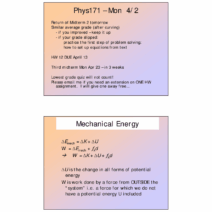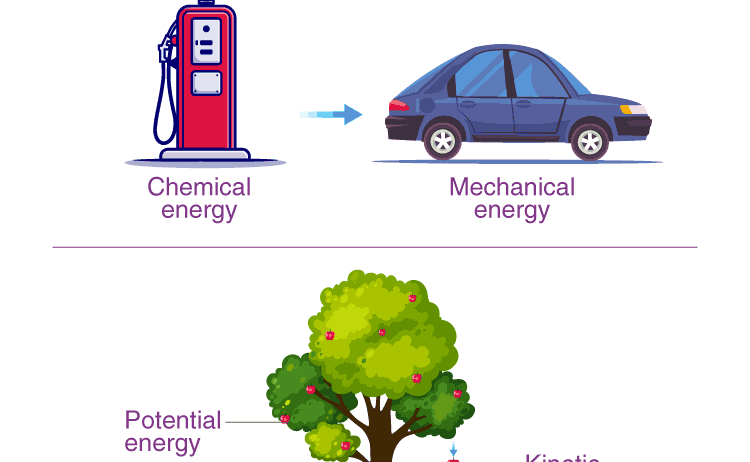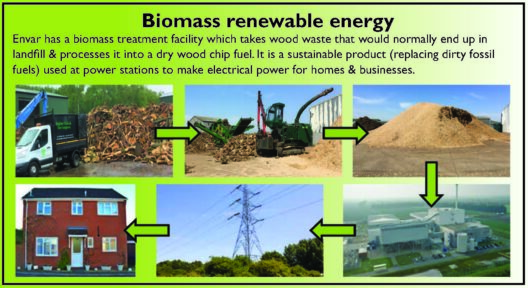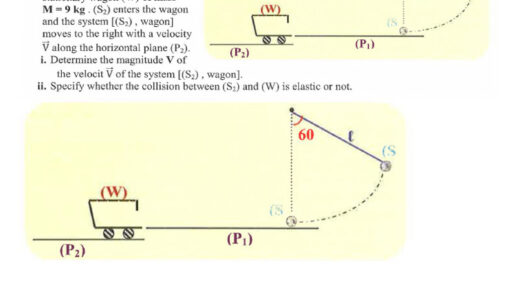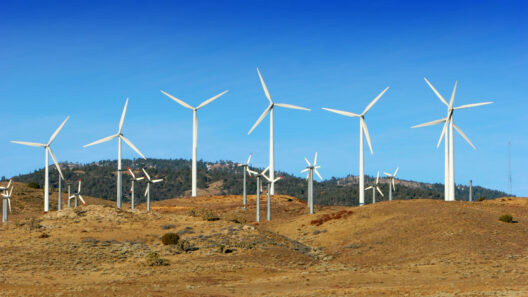When delving into the fascinating world of physics, one often encounters complex problems that challenge our understanding of the natural laws that govern energy. Imagine this: you’re in a park, watching a child at play. A ball is thrown vertically into the air, reaching a peak before it succumbs to gravity and descends back to the ground. Have you ever wondered how the energy of that ball transforms as it ascends and descends? This question leads us directly to the concept of the Law of Conservation of Energy—a fundamental principle that dictates that energy can neither be created nor destroyed; it can only change forms. Let’s embark on an enlightening journey through this law and practice solving related problems.
The principle may sound deceptively simple, but it forms the cornerstone of classical mechanics. Understanding it involves dissecting the various forms energy can take, chiefly kinetic and potential energy. Kinetic energy is the energy of motion, and potential energy is stored energy based on an object’s position. To make sense of these concepts, we can scrutinize the mathematical expressions associated with them. The equation for kinetic energy is given by K.E. = 1/2 mv², where m represents mass and v denotes velocity. On the other hand, gravitational potential energy is expressed as P.E. = mgh, where g symbolizes gravitational acceleration and h is the height above ground level.
Let’s tackle a typical problem involving the Law of Conservation of Energy. Suppose a ball of mass 2 kilograms is thrown upwards with an initial velocity of 10 meters per second. To find out how high the ball ascends, we need to calculate its initial kinetic energy. Plugging in our values, we find:
K.E. = 1/2 (2 kg) (10 m/s)² = 100 joules.
As the ball rises, its kinetic energy is converted into potential energy until it momentarily halts at its peak height, where kinetic energy becomes zero. According to the Law of Conservation of Energy, the total mechanical energy remains constant throughout the ball’s flight. Thus, at the peak height, the potential energy equals the initial kinetic energy:
P.E. = mgh = 100 joules.
Now, we can isolate for height h:
100 = (2 kg)(9.8 m/s²)(h) ⟹ h = 5.1 meters.
This example illustrates how to apply the Law of Conservation of Energy efficiently. The energy was conserved throughout the ball’s journey, transitioning seamlessly from one form to another.
Problems can become multifaceted, incorporating different forces, such as friction or air resistance. This is where challenges can arise, accompanied by a flurry of calculations. When one considers friction, energy is transformed into thermal energy rather than being converted back into kinetic energy. Imagine a skier going downhill—friction between the skis and the snow dissipates energy, impacting velocity. To incorporate these forces in problem-solving, one must adopt a comprehensive approach, often employing the work-energy principle, succinctly encapsulated in the equation:
W = ΔK.E., where W is work done on the object.
Let us consider an engaging challenge. Picture a skateboarder atop a ramp. If the skateboarder has an estimated mass of 50 kilograms and the ramp height is 2 meters, their potential energy at the peak is:
P.E. = mgh = (50 kg)(9.8 m/s²)(2 m) = 980 joules.
Now, if we assume friction is negligible and the ramp is frictionless, how fast will the skateboarder be moving at the bottom of the ramp? As they descend, the potential energy converts back into kinetic energy. By the time they reach the bottom, all potential energy should equal kinetic energy:
K.E. = 980 joules = 1/2 mv².
Solving for velocity v gives:
2(980) = 50v² ⟹ v² = 39.2 ⟹ v = 6.26 m/s.
This journey of energy illustrates more than mere manipulation of equations. It reflects the interplay between forces, the conservation principle, and the logical elegance of physics. By now, you’ve likely fostered a curiosity regarding the complexities surrounding energy transformations.
To master conservation problems, one must embrace a systematic approach: identify the forms of energy involved, establish what is being conserved, and deploy relevant equations adeptly. The journey entails continually practicing various problems—some simple, others intricate. Resources can be utilized, such as simulations, online exercises, or educational videos to bolster understanding.
In conclusion, the Law of Conservation of Energy stands as a testament to the unity and elegance of physics, inviting you to explore, question, and solve intricate problems. As you master these principles, remember that physics is not merely about equations and symbols; it ultimately embodies the understanding of the world around you. Will you take on the challenge of exploring energy in all its forms?


